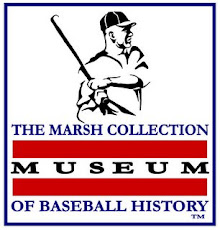Baseball, originally a game of leisure and widely known as a
gentleman’s game, evolved into a professional vocation for those talented
enough, however, talent was slighted from the shadows of the past.
In 1871, the first professional league was formed. Moses Fleetwood Walker was the first black to
appear with a major league club in 1884.

Credit is given to Andrew “Rube” Foster who, in 1920 at the Paseo Street Y.M.C.A. building in
In 1923, the Eastern Colored League was formed and boasted four Negro League World Series in `24-`27, but the E.C.L. scattered in 1928.
In 1932, the Negro Southern League gained Major League
status.
The Negro National League was reestablished in 1933 with Gus
Greenlee at the helm. The league featured two divisions, East and West, and heralded
the famed East-West All-Star Game.
The Negro American League was established in 1937 after the
demise of the Negro National League. In
1948, the Negro American League formed East-West divisions, but the end of
black baseball was certain, as many followed Jackie Robinson after 1947 into a
new integrated game.
The Negro
Leagues continued until the greatness of this era came to close in 1960.
Source: Negro Leagues Biographical Encyclopedia, James Riley





